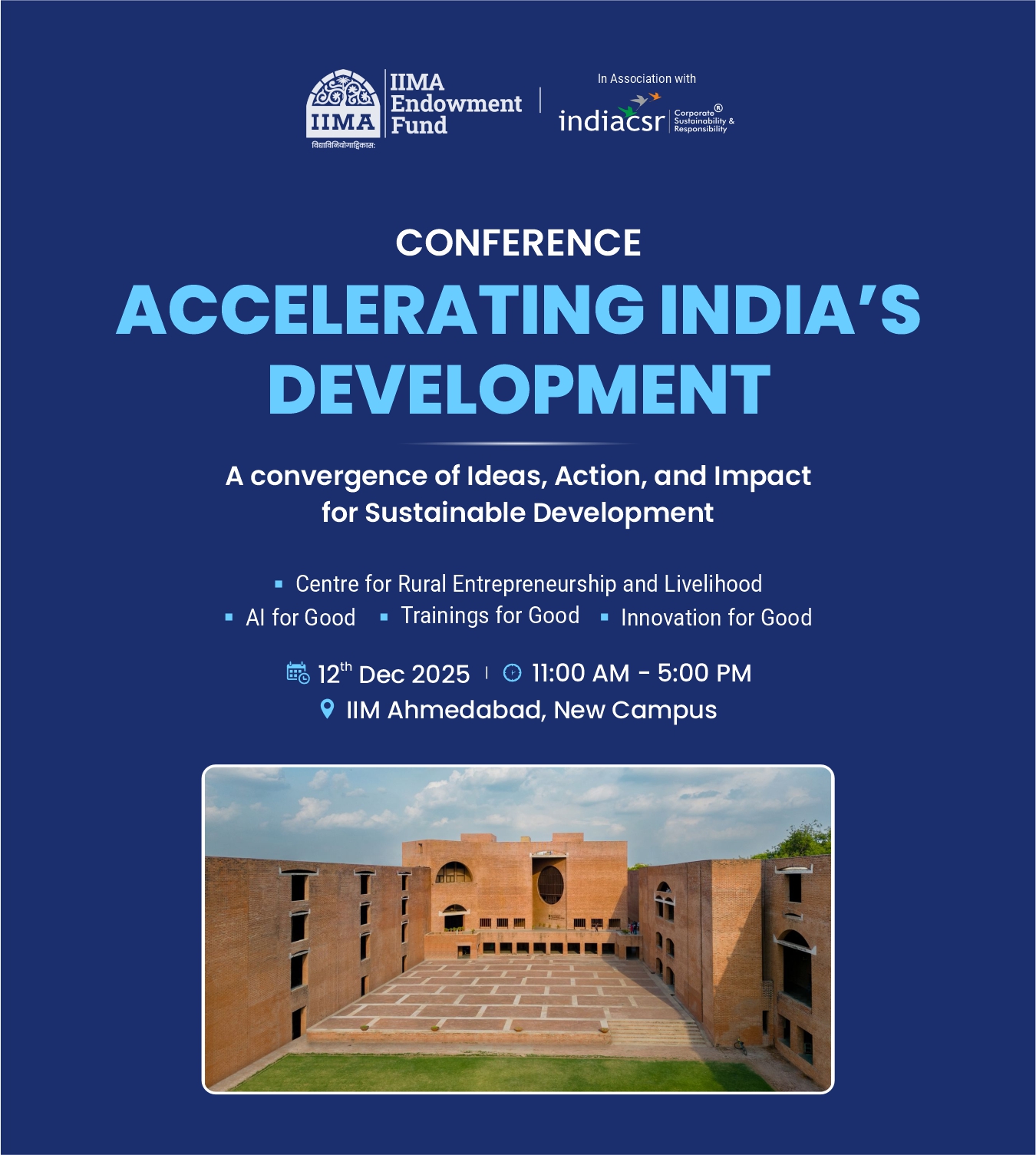How one of the world’s largest technology companies is redefining responsible innovation and global sustainability
Lenovo’s FY2024-25 ESG Report reflects a company operating with the awareness that large global technology corporations hold immense responsibility toward the planet and society. As a brand serving customers in more than 180 markets, Lenovo acknowledges that its decisions influence not only its own value chain but the sustainability landscape of the technology sector at large. The company’s ESG strategy is built on three powerful pillars—Environment, Social, and Governance—which together form a unified framework guiding how Lenovo designs its products, manages its supply chain, treats its people, and innovates responsibly. What makes this report especially significant is the scale of Lenovo’s commitments: validated net-zero targets, globally aligned sustainability programs, and ethical governance structures embedded across all business units. The FY2024-25 Report is not a compliance document; it is a blueprint for how Lenovo envisions the future of sustainable technology.
I. ENVIRONMENT
Accelerating climate action and redefining sustainability through technology and circularity
1. Climate Change
A Science-Aligned Journey Toward Net Zero
Lenovo’s climate strategy begins with the recognition that climate change is driven by human activity and poses serious risks to economic systems, communities, and businesses. Rather than taking a minimalistic approach, the company aligns its mitigation plans with the findings of the Intergovernmental Panel on Climate Change (IPCC), demonstrating respect for science and global consensus. Lenovo’s Climate and Energy Policy, supported by detailed emissions tracking and long-term planning, forms the backbone of its climate response. The company has set both near-term (2030) and long-term (2050) emissions reduction targets validated by the Science Based Targets initiative (SBTi). These targets demand deep, measurable reductions across Scope 1, 2, and 3 emissions, requiring Lenovo to rethink how products are designed, how energy is consumed across facilities, and how global logistics operate. Importantly, the company was one of the first in the world—and the first in its sector—to secure SBTi net-zero validation, reflecting early leadership and industry-wide credibility.
Lenovo’s climate risk assessment goes beyond emissions accounting. The company undertakes an extensive evaluation of physical risks (extreme weather, supply chain disruptions) and transition risks (policy changes, carbon pricing, market shifts). Scenario modeling under the 1.5°C framework shows that while climate threats can disrupt operations, Lenovo’s proactive strategy can unlock new opportunities—particularly in energy-efficient devices, climate advisory services, and AI-enabled sustainability solutions. By embedding climate considerations into enterprise-wide decision making, Lenovo ensures that long-term environmental impacts are factored into everyday business operations.
2. Energy Management & Renewable Transition
Powering Operations with Clean Energy
Energy consumption forms the foundation of Lenovo’s climate footprint, and the company has developed a multi-pronged strategy to transition toward cleaner, more efficient energy systems. Lenovo operates through a global Environmental Management System (EMS) that sets annual energy targets, emphasizing reduced consumption, higher efficiency, and increased use of renewables. The company has already installed 34.5 MW of solar power capacity, feeding renewable energy directly into manufacturing and office facilities. Some of its major campuses—such as Tianjin Smart Campus (TJSC) and the Budapest office—run entirely on renewable electricity sourced under formal agreements with local utility providers.
Where onsite renewable energy generation is impractical, Lenovo supplements its clean energy portfolio with Renewable Energy Credits (RECs), International RECs, Guarantees of Origin (GOs), and non-fossil certificates, covering markets like China, Japan, Brazil, India, Mexico, the US, and Europe. The company is committed to ensuring that 90% of electricity consumed globally will come from renewable sources by FY2025/26, one of the most ambitious near-term renewable energy goals in the technology industry.
Energy efficiency is also an integral part of Lenovo’s roadmap. The company invests in advanced energy-saving technologies such as high-efficiency chillers, smart metering, optimized power systems, AI-driven forecasting, and high-performance cooling systems like Lenovo Neptune™ liquid cooling. These innovations reduce reliance on traditional energy-intensive cooling and improve efficiency at a scale suitable for supercomputing environments. The Tianjin Smart Campus alone implemented 90 carbon-reduction measures spanning solar installations, rainwater harvesting, grey water systems, LED retrofits, and digital carbon visualization tools—earning the prestigious “Eco-Level Carbon Neutral Factory” certification.
3. Environmentally Conscious Product Design
Building Sustainability into Every Device
Lenovo’s approach to product design is rooted in the principles of environmental responsibility, circular economy thinking, and resource conservation. The company’s global product development teams follow internal standards that prioritize environmentally conscious materials, safer chemical use, repairability, recyclability, and energy efficiency. Lenovo restricts hazardous substances beyond regulatory requirements, adhering to global frameworks such as the EU’s RoHS and REACH standards. Importantly, Lenovo has completely phased out BFR/CFR/PVC from mechanical plastic parts and continues pushing toward halogen-free components across its product lines.
A hallmark of Lenovo’s sustainable product strategy is the extensive use of post-consumer recycled content (PCC), closed-loop PCC (CL PCC), and ocean-bound plastics (OBP). These materials are integrated into notebooks, desktops, monitors, tablets, smartphones, and accessories. Lenovo engineers work closely with suppliers to develop recycled plastics capable of meeting strict structural and aesthetic requirements. The company also uses recycled metals—including aluminum, copper, magnesium, steel, and rare-earth materials—to reduce demand for virgin mining.
Lenovo’s commitment is bold and measurable: By FY2025/26, all newly sold PC products will contain recycled materials, excluding tablets and accessories. This positions Lenovo as a global leader in circular material innovation.
4. Packaging Innovation
Reducing Waste and Emissions from the First Product Touchpoint
Packaging plays a significant role in both carbon emissions and material waste. Lenovo has taken a holistic approach by redesigning packaging to use more biodegradable, lightweight, and recycled materials. The company is transitioning away from large plastic components and exploring bio-based alternatives such as bamboo fiber, sugarcane residue, and recycled cardboard. These innovations not only reduce waste but also cut emissions from logistics due to lighter packaging and optimized dimensions. Lenovo’s packaging design is now guided by global circularity principles, improving sustainability from the very first customer interaction.
5. Product End-of-Life Management
Closing the Loop on Technology Waste
Lenovo’s Product End-of-Life Management (PELM) program ensures responsible recovery, recycling, repurposing, and processing of devices once they reach the end of their usability. This global system covers returned products, scrap generated within facilities, spare parts, and other forms of e-waste. The goal is to divert electronic material away from landfills, recover valuable resources, and reintroduce materials back into the manufacturing cycle where possible. The PELM system is a critical pillar in Lenovo’s circular economy strategy, enabling the company to reduce waste, mitigate environmental impacts, and meet its sustainability targets across global markets.
6. Waste Management
Minimizing Environmental Impact Across All Facilities
Lenovo manages waste through a structured EMS requiring detailed tracking of hazardous and non-hazardous waste across all global facilities. Non-hazardous waste includes office waste, cafeteria waste, packaging waste, and manufacturing scrap. The company’s FY2024/25 target was to ensure that 90% of non-hazardous waste is directed to recovery operations, such as recycling or composting—a target that reflects Lenovo’s ongoing commitment to minimizing landfill contribution. Hazardous waste, such as solvents or lightbulbs, is generated in small quantities and is strictly handled through licensed disposal partners, ensuring adherence to local laws and best environmental practices.
7. Water Management
Strengthening Water Resilience Across Operations
Though Lenovo is not a water-intensive manufacturer, the company recognizes the global importance of water stewardship. Most water consumption occurs through employee facilities, hygiene systems, and building cooling. Lenovo’s Water Resiliency Policy commits the company to responsible water usage, risk analysis, and continuous improvement. It participates in international frameworks such as the UN CEO Water Mandate and the Science Based Targets Network (SBTN), reflecting its belief that responsible water management is a shared global responsibility.
Lenovo conducts annual water risk assessments using internationally recognized tools like WRI Aqueduct and WWF Water Risk Filter. A long-term target aims to reduce water withdrawal at manufacturing sites by 1.8 metric tons per capita by FY2029/30—demonstrating a shift from short-term efficiency goals to long-term resilience planning. Additionally, Lenovo collaborates with the nonprofit Wine to Water to improve global access to clean drinking water, reinforcing its broader social mission.
II. SOCIAL
Placing people, communities, and human rights at the heart of corporate responsibility
1. Labor Practices and Human Rights
Upholding Global Standards Across Borders
As a global employer with a vast supply chain, Lenovo places significant emphasis on ensuring human rights protection at each level of its operations. The company aligns with the Responsible Business Alliance (RBA) Code of Conduct and enforces stringent expectations for fair labor practices across suppliers and vendors. Lenovo’s Supplier Code of Conduct prohibits forced labor, child labor, discrimination, and unsafe labor conditions, ensuring that manufacturing and supply chain partners adhere to globally accepted standards. Regular audits, assessments, corrective action plans, and capacity-building sessions further reinforce this human rights framework. Lenovo’s approach is proactive, ensuring that workers—whether inside its facilities or within supplier factories—are treated with dignity, fairness, and respect.
2. Health and Safety
Cultivating Safe Workplaces Across Global Operations
Health and safety are central to Lenovo’s social responsibility. Its facilities follow strict policies and globally aligned systems that promote workplace safety, ergonomics, emergency preparedness, and occupational health. Regular risk assessments identify potential hazards, and safety audits help maintain compliance with internal and external guidelines. Lenovo ensures that employees receive adequate safety training and that workplace environments are continuously monitored for improvements. The emphasis is not only on preventing accidents but fostering a culture where safety is integral to everyday activity, especially in manufacturing locations where employees interact with equipment, logistics operations, and facility infrastructure.
3. Employment and Talent Management
Empowering a Global Workforce
Lenovo invests heavily in nurturing and developing its workforce. The company offers structured training programs, skill development workshops, leadership pathways, and tools to promote career mobility across global roles. It fosters a culture of continuous learning and invests in technical, managerial, and soft skills to help employees stay prepared for evolving industry needs—especially as AI becomes a central part of Lenovo’s transformation. Employee engagement is strengthened through feedback mechanisms, internal communication platforms, and recognition programs that celebrate innovation, service excellence, and collaboration. Lenovo’s global operations benefit from a workforce that is diverse, tech-savvy, and aligned to the organization’s mission of delivering “Smarter Technology for All.”
4. Inclusive Workplace
Advancing Equity, Diversity, and Belonging
Inclusion is one of Lenovo’s core values and a critical component of its social pillar. The company views diversity not merely as a compliance area but as a strategic strength that enhances innovation and creativity. Lenovo’s inclusive culture is supported through global policies that promote equal opportunity and prevent discrimination. Employee Resource Groups (ERGs) provide identity-affirming spaces for employees across gender, disability, ethnicity, and other communities. Inclusion also extends to product design: Lenovo develops AI-powered accessibility tools—such as digital avatars for individuals with speech disabilities—to ensure the benefits of innovation reach all users. This reflects Lenovo’s belief that technology should empower people of every background and ability.
5. Philanthropy and Community Engagement
Creating Social Value at Scale
Lenovo’s philanthropic initiatives aim to directly impact over 15 million lives between 2020–2025, making it one of the largest corporate social impact commitments in the technology industry. The company mobilizes employees through the “Love on Month of Service” program, which encourages volunteering, community service, and local impact projects around the world. Lenovo also supports digital inclusion, education, and STEM learning initiatives—helping bridge the digital divide in underserved regions. Its partnerships with NGOs enable it to respond to natural disasters, expand clean water access, and support community resilience. These programs reflect Lenovo’s belief that technology companies have an obligation to support the communities that sustain them.
III. GOVERNANCE
Building trust through ethics, responsible leadership, transparency, and oversight
1. ESG Governance Structure
Leadership at the Highest Level
Lenovo’s governance framework ensures that sustainability is integrated into core business decision-making. The company’s Board of Directors receives regular briefings on ESG performance, while the ESG Executive Oversight Committee (EOC)—led by the Chief Legal & Corporate Responsibility Officer—coordinates sustainability efforts across the organization. The committee includes senior executives from key business units, ensuring that governance, ethics, transparency, and sustainability targets are embedded across product development, operations, supply chain management, and marketing. This governance structure empowers Lenovo to execute its ESG strategy with clarity, accountability, and long-term focus.
FY2025-lenovo-sustainability-re…
2. Cybersecurity and Data Privacy
Protecting Users in a Digitized World
Cybersecurity has become a defining challenge of modern business. Lenovo invests in global stewardship of data protection systems, ensuring that customer data, operational information, and internal communications remain secure. The company complies with international data protection regulations and continually updates its cybersecurity infrastructure to respond to emerging threats. Privacy principles guide Lenovo’s software, hardware, and service offerings, ensuring that digital trust is earned—not assumed. These efforts safeguard not only Lenovo’s own systems but also the millions of users who rely on its devices and solutions every day.
3. Ethical Artificial Intelligence (AI)
Governance for a New Technological Era
With AI becoming embedded across devices, platforms, and business processes, Lenovo has made ethical AI governance a central component of its ESG framework. The company created a Responsible AI Committee in 2022 and introduced a comprehensive AI Policy in 2024 that governs how AI is used across the organization. The policy addresses fairness, privacy, user safety, legal compliance, transparency, and the prevention of algorithmic bias. Lenovo aligns its AI practices with leading global frameworks, including UNESCO’s Responsible AI principles and the EU and Canada’s voluntary AI governance codes.
Lenovo also evaluates AI embedded within its devices—ensuring that products do not inadvertently discriminate against users based on identity, background, or ability. This makes Lenovo one of the few global firms with a governance structure that covers both internal AI operations and AI-as-a-product.
4. Ethics, Integrity & Anti-Corruption
Strengthening Corporate Accountability
Ethics forms the core of Lenovo’s governance strategy. The company maintains a strict global Code of Conduct applicable to all employees, executives, and suppliers. Anti-corruption frameworks, whistleblower channels, and compliance audits form the backbone of Lenovo’s accountability system. Lenovo also undertakes mandatory training programs to reinforce ethical behavior and prevent misconduct. This culture of integrity is vital in an industry where global supply chains, geopolitical pressures, and regulatory complexities constantly evolve.
5. Product Quality & Safety
Ensuring Trust and Reliability
Lenovo embeds quality assurance processes throughout its product lifecycle—from material sourcing to design, assembly, testing, packaging, and distribution. Quality management is deeply integrated across its global manufacturing network through rigorous testing protocols and alignment with international safety standards. As devices become more powerful and complex, this governance commitment ensures that Lenovo products remain safe, reliable, and durable. Sustained product quality is crucial for maintaining customer trust and reducing environmental impacts associated with product failure or early replacement.
6. Innovation Governance
Building a Sustainable Tech Future
Innovation at Lenovo is not viewed solely in terms of technological progress—it is also governed through sustainability, ethics, and long-term societal impact. The company invests in advanced systems such as Lenovo ESG Navigator, LISSA, and high-efficiency computing platforms that integrate AI and climate-conscious engineering. This ensures that innovation contributes to climate goals, energy efficiency, and responsible resource usage. Lenovo’s innovations—from liquid cooling systems to recycled-material product lines—reflect a governance culture that prioritizes responsible progress rather than unchecked growth.
7. Reporting, Disclosure & Regulatory Compliance
Transparency at Every Level
Lenovo prepares its ESG Report in alignment with the HKEX ESG Reporting Code, GRI Standards, and UN Global Compact principles. Environmental data such as energy, GHG emissions, waste, and water undergo independent third-party verification, demonstrating Lenovo’s commitment to transparency and accuracy. The company also conducts annual materiality assessments involving stakeholders to determine which ESG issues are most important for reporting. Through its disclosures, Lenovo establishes itself as a responsible and transparent corporation—accountable to shareholders, customers, employees, regulators, and global sustainability frameworks.
(India CSR)






